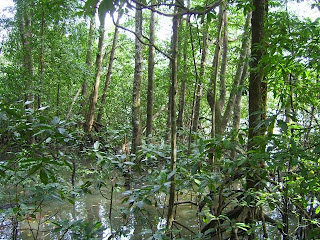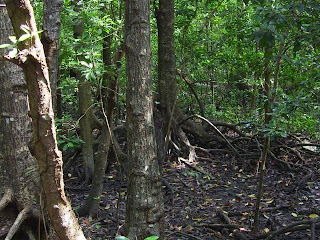If mentioned as the above, not many of us would understand and know what they actually are. Unless you are a biologist or an ecologist doing your research on coastal shores habitats and its surroundings. However, in common English layman terms, both of these terms are known as the mangroves plant.



These weird looking plants are growing vastly in the Matang Mangrove Reserve, covering an area of 40466 hectare. It stretches from Kuala Gula on the northern tip up to Pantai Remis on its southern tip at the coastal shore of Perak state.



In the third part of the Kuala Sepetang boat tour, we will be passing through an island known as the Mangrove's Virgin Jungle Reserve. This island reserve acts as an important part in making Matang Mangrove Reserve as the best managed reserve in the world. It is where the seedlings of the mangrove plants being collected and being planted in other compartments around the whole reserve area.



The overall process of managing each mangrove reserve compartment will take a cycle of 30 years, from it seeds form up to the matured plants being chopped. They are being used in construction works and for the process of making charcoal. After being chopped, the seeds will be replant again for the next cycle to take place.


However, the plants in this island are not being chopped and being let to grow naturally. That is why from afar during the boat tour, their towering heights and huge trunk size are noticeable. The area around this island have been a place for the Sightings of otters, eagles, monkeys, lizards and sometimes dolphin, but it is depending on one's luck to see them.


And apart from having economic values and habitat to some animals, the mangrove reserve has saved the live of all the fishermen including their village from the disastrous 2004 tsunami. The tidal waves were dispersed by the existence of these plants.



Thus, this part of the boat tour will give a deeper understanding and importance of the weird looking Rhizophora mucronata or Rhizophora apiculata...








No comments:
Post a Comment